Driving traffic to your website is about more than generating great content that resonates with your target audience, though that is a crucial component.
Increasing site readership is really about having your prospective reader’s best interests top-of-mind as you develop your strategy. Think about how they might look for services or sites like yours, and work to meet them halfway.
Drive Traffic To Your Website and Increase Readership for Your Blog
1. Good Old Strategy
The first and most important thing you have to have to drive traffic to your website is a strategy. You need to formulate a plan to ensure you’re hitting all the right demographics and outside sites that will send traffic your way.
Approaching online marketing without a strategy will always result in wasted time, effort, and money. Before anything else, make a plan that includes your target audience and how you want to reach them (i.e. multiple ways from multiple angles). This will inform everything else you do.
2. Search Engine Optimization
There’s a reason Google is a verb. More traffic to your website is generated via googling than by any other method; it’s the modern phone book and should be treated as such. Search Engine Optimization, or SEO, is how you do that.
Where some businesses used to game the system by naming themselves “AAA Contracting,” thus front-loading their appearance in their phone book section, now savvy business owners are optimizing the content on their sites with keywording in the site’s content.
How do you think readers will search for services or sites like yours? Take those search terms and incorporate them into your site in as heavy, but tactful, a way as possible. Writing with the right keywords really helps search engines do their jobs better.
3. Dependable HTML
Search engines used to rely on what web designers call “meta” information, or the invisible information added into the code of the site itself. Adding descriptive text and keywords into the code itself was once the only way for search engines to find and categorize sites.
Nowadays, search engine robots can sift through all of a site’s content and not just the HTML code, but that doesn’t mean HTML tagging is obsolete. Your site <title> is often the first thing folks will see when they search for you, as it appears not only at the top of your site but also in search engine results. Likewise, the information in the <meta> tag is useful for providing search engines with a description and another set of keywords for your site and will help send traffic to your website.
4. Searchable XML Sitemap
XML is a language used for a number of purposes in web design, one among them being the SEO-friendly process by which a sitemap of all your site’s content is generated. This is useful as another way to help search engine robots do their jobs more efficiently and completely.
By providing an XML sitemap file in the root directory of your site, search engines can easily see all pages on your site and index them, regardless of their status or whether they’ve been geared toward SEO.
5. Solid Internal Content
The previous points were about SEO strategy and enhancing your site’s code in order to make it more friendly to search engines, but that’s all infrastructure. It’s equally important to flesh out your site with meaningful content that will pique the interest of your target demographic.
There’s a delicate balance to quality content and search engine optimization. Writing organic content with fewer keywords may not immediately attract search engine robots in the way that pure SEO does, but it will attract real human beings. Content that comes from you has a quality above pure SEO content, and speaks to your voice as a business owner and expert. And who knows? Something you write may be just that non-keyword thing that a potential customer searches for in the future!
6. Inbound Links
Your site can’t exist on its own. The second most important component to driving traffic to your website is inbound links. This means that you’re acknowledging the traffic going to other sites and using it to your advantage.
Does your target demographic include the vast audience of YouTube watchers? If so, the proper inbound linking strategy would include the generation of (or reposting of) quality content to YouTube with active links to your site for the curious.
For other general business-to-business purposes, just make sure folks can find you. Having a presence on all social media outlets (Pinterest, Facebook, Twitter, Instagram, LinkedIn, Google+) with solid links back to your site will generate a surprising amount of traffic for you, especially if those accounts are active.
7. Solid External Content
Social media was mentioned in the previous point in terms of containing an active link to your site, but why would potential site visitors ever click on the links unless there was external content worth reading?
Have a plan for tweeting and pinning things of interest to your potential audience. Social media following grows slowly, but persistence in your social media content generation plan will pay off as your credibility and reach grow. Naturally, as your reach grows, so will your audience’s curiosity about what it is you do.
8. Shareability
Finally, what better way to cap off a discussion about driving traffic to your website than mentioning the crucial aspect of sharing? Word of mouth is always the most effective (and cost-effective) method of advertising, and online content sharing can expand your audience and reach exponentially.
Once you’ve gotten some traffic built up, it’s crucial to ensure that that traffic starts working for you in a meaningful way. Readers who are charged by and interested in your content will naturally want to share it with other like-minded people, so make sure to add easy-to-use buttons for sharing to all the major social media outlets, as well as direct emailing.
Driving traffic to your website isn’t easy at all, but there are concrete steps you can take to ensure that you’re doing all you can. These steps don’t have to take a lot of time, knowledge, money, or resources, but they do take just a bit of planning.



